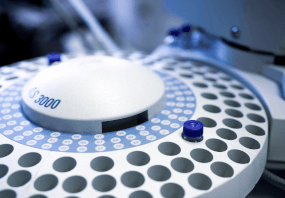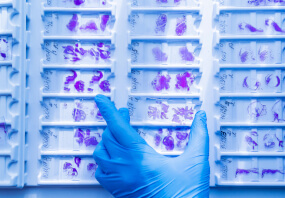Purpose of derivatization Improved volatility, better thermal stability or a lower limit of detection in GC Prerequisite: quantitative, rapid and reproducible formation of only one derivative Halogen atoms introduced by derivatization (e.g., trifluoroacetates) for specific detection (ECD) with the advantage of high sensitivity Influence of elution orders and fragmentation patterns in MS by a specific derivatization Silylation reagent BSA Strong silylation reagent, which forms very stable TMS derivatives of a wide variety of compounds, e.g., alcohols, amines, carboxylic acids, phenols, steroids, biogenic amines and alkaloids Not Recommended for use with carbohydrates or very low molecular weight compounds Good solvent for polar compounds, but frequently used in combination with a solvent (pyridine, DMF etc.) or with other silylation reagents When used with DMF, BSA is the reagent of choice for derivatizing phenols Silylation reagent BSTFA Powerful trimethylsilyl donor with approximately the same donor strength as the nonfluorinated analog BSA Advantage of BSTFA over BSA: greater volatility of its reaction products (particularly useful for GC of some lower boiling TMS amino acids) BSTFA is nonpolar (less polar than MSTFA), and can be mixed with acetonitrile for improved solubility. For silylating fatty acid amides, hindered hydroxyls and other compounds, which are difficult to silylate (like secondary alcohols and amines), we recommend BSTFA + 1 % trimethylchlorosilane (TMCS), available under the designation SILYL-991. These products can contain harmful substances which must be specially labeled as hazardous.
Shipping Information:
Hazmat Fee: $65.00 + applicable shipping charges are added after the order is placed.
More Information: https://cenmed.com/shipping-returns
- UPC:
- 51113000
- Condition:
- New
- Availability:
- 3 Days
- Weight:
- 1.00 Ounces
- HazmatClass:
- Yes
- WeightUOM:
- LB
- MPN:
- 701210.11












